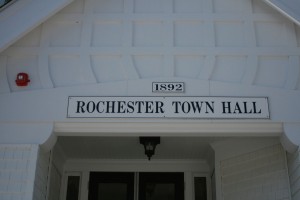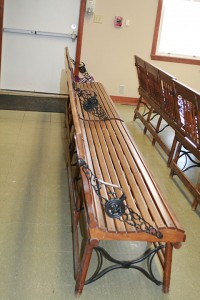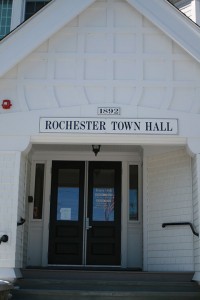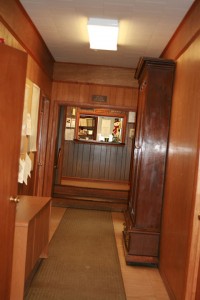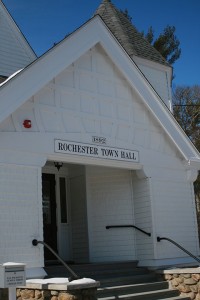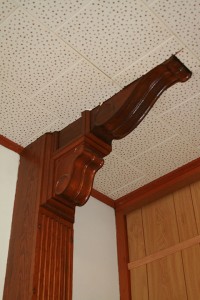Tucked away in the southeast corner of Massachusetts, quietly nestled in pine forests and rich with antique homes, the agrarian town of Rochester is a true gem in an otherwise bustling world.
Driving along its scenic roadways past farms and stonewalls, ponds and streams, one gets a sense of what life might have been like 100 or even 200 years ago.
As you roll through the center of town, whether you’ve done so your entire life or are new to the area, your eyes are immediately drawn to the striking white buildings that prominently declare the age of the community. The church and town hall are beautiful examples of early American architecture. The library, built in 1976, complements the older structures with its understated country charm.
Today’s town hall was built in 1892. Originally constructed as a town meeting place, the first floor of the building was once a single large room with a stage situated at the back. As you face what is now the town clerk’s office, the two steps that lead to Naida Parker’s office led to a stage area.
“Prior to the 1970s, there weren’t any offices in here,” said Parker. She explained that the town’s business was conducted in the homes of those serving in various capacities. She said Hoyt Demoranville was the first selectman to have an office in what is now a fully operational town office building.
“There wasn’t any indoor plumbing!” Parker exclaimed. She said an outhouse had been in use until her predecessor was hired. Then a small area immediately to the right of the front hallway became indoor restrooms much to the joy of those who by then were beavering away in offices sectioned out of the once grand hall.
There are intriguing hints everywhere you look. An intricate scrolling cornice, a red brick fire place, high thick wainscoting, creaking old wooden floors, and a second floor complete with a balcony. From the balcony, residents could watch the dancing taking place below. Yes, the town hall served as a town meeting hall, dance hall, theater, and even the public library at one point.
According to the Massachusetts Historical Commission report, the first meetinghouse was the First Parish built in 1790 at the same location. A second town hall building was constructed in 1811 and then in 1892, the commission report notes, the town hall we see on the green today was constructed.
Rochester, like its tri-town sisters Marion and Mattapoisett, is faced with the growing needs of a modern population. Old town hall buildings are no longer financially feasible as repairs and upgrades outpace budgets. Each town has asked its residents to consider options for building new town halls or rehabilitating them. Everyone agrees, however, that something will need to be done to relieve the stress on these historic buildings.
And what would a future look like for Rochester’s town hall if made obsolete? My guess is that it will be returned to its former glory to serve another century as a vital part of the community.
By Marilou Newell
